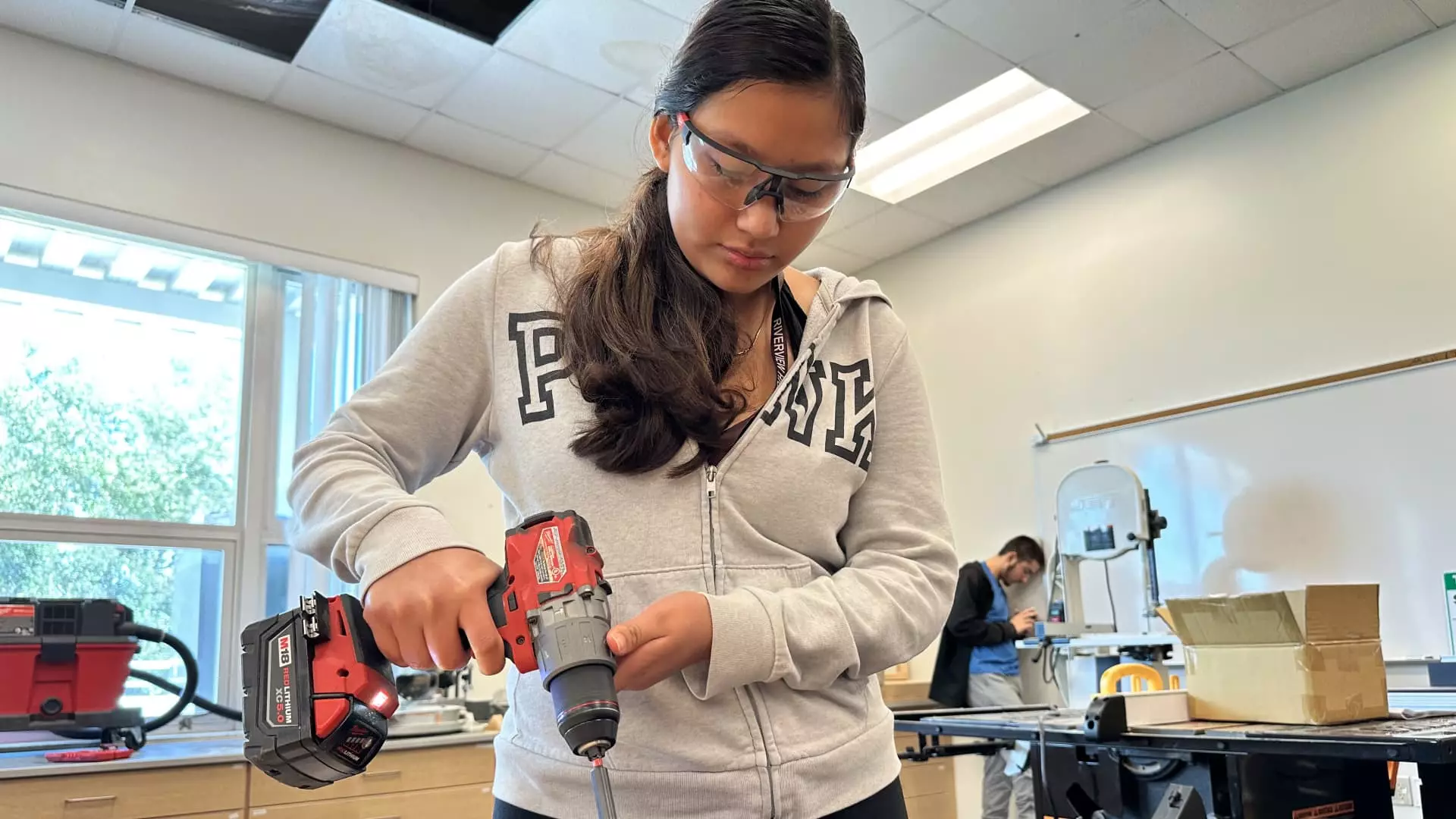For many young adults today, the traditional view of college as the primary pathway to success is rapidly changing. Consider the example of Angela Ramirez-Riojas, an 18-year-old from Riverview, Florida. Unlike previous generations that often viewed a four-year degree as the pinnacle of educational attainment, Angela regards college as a backup plan. Her story is a reflection of a broader trend among Generation Z, who are increasingly exploring vocational training and skilled trades as viable and appealing career options. Inspired by her grandfather’s work in construction, Angela’s story illuminates an emerging narrative in which gaining hands-on experience is valued as highly as pursuing a bachelor’s degree.
In recent years, educational institutions have responded to changing attitudes about career readiness and success. Riverview High School’s construction academy exemplifies this movement. Established to offer students like Angela practical training in carpentry, plumbing, and electrical work, the program was a significant step towards bridging the gap between education and employment. With a waiting list for enrollment, it has become clear that students are eager to engage in hands-on learning that translates directly into job opportunities.
What distinguishes Angela’s experience from the typical college-bound student is her embrace of a practical skillset. Programs like Riverview’s construction academy provide much more than the rudimentary training often associated with blue-collar work. Students receive comprehensive training that prepares them for a spectrum of roles within the construction industry—ranging from hands-on trades to management and logistics.
This multi-faceted approach is critical in a time when the construction sector faces a dire labor shortage. According to the Associated Builders and Contractors, the industry must attract hundreds of thousands of additional workers each year to meet ongoing demand. High unemployment rates within the industry can often be misleading, as they mask the escalating need for skilled workers ready to tackle the challenges of modern construction projects. Conversely, as the average age of experienced workers rises, the gap between new and seasoned professionals continues to widen, further exacerbating the shortage.
Angela’s preference for vocational training also coincides with a notable economic reality: skilled trades often offer compensation sidelining many traditional white-collar roles. New hires in construction have seen median salaries soar, reaching over $48,000—a figure that significantly surpasses the earnings of graduates entering professional services sectors. This economic aspect is crucial for prospective students weighing the costs and benefits of various educational paths.
Furthermore, the notion that a four-year college degree is the only route to prosperity is being reevaluated. A report from Junior Achievement reveals that nearly half of all high school students believe that trade programs and associate degrees are sufficient for achieving career success. This acknowledgment suggests a shift in perspective where practical experience, rather than solely academic credentials, is increasingly seen as a ticket to career advancement.
The compelling case for vocational education raises important questions about educational policy and preparation for future generations. As more students express interest in skilled trades, educational institutions and governments must prioritize support for such programs. Providing financial backing to vocational training initiatives could dramatically benefit local economies and reduce unemployment by meeting the pressing needs of industries like construction.
Organizations like Neal Communities, which supported Riverview High School’s construction academy with a generous donation, highlight the significance of community engagement in fostering vocational training. By investing in youth development, builders and tradespeople are not merely ensuring a skilled workforce; they are actively contributing to the sustainability and prosperity of their local economies.
The experiences of students like Angela Ramirez-Riojas reveal a significant cultural shift. As Generation Z navigates their educational and career paths, they are increasingly prioritizing vocational training over traditional college degrees. This trend is driven not only by the financial aspects of skilled trades but also by a desire for meaningful work that provides a clear pathway to job security and success.
As society continues to re-evaluate the value of higher education against the backdrop of student debt and job market realities, it is imperative to promote vocational and skilled trade opportunities. By doing so, we can encourage students to pursue fulfilling careers that meet the demands of today’s economy, thereby redefining the standard of success for future generations.

